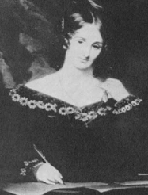
“An Economic ‘Frankenstein’”: UAW Workers’ Response to Automation at the Ford Brook Park Plant in the 1950s
This essay is reproduced with minor alterations from Michigan Historical Review 28 (2002): 63-90. Reproduced by permission of the Clarke Historical Library.
Introduction
In 1953 Alfred Granakis, president of UAW Local 1250, wrote to UAW president Walter Reuther about “wrestling with myself for weeks on end” and being unable “to come to any solution” on some thorny shop-floor problems at a new Ford plant in Cleveland, Ohio. The local union president described his concern about the Brook Park engine plants and foundry, depicted by Ford officials as “today’s nearest approach to a fully automated factory in the automobile industry.” This complex, they proclaimed, was “another milestone” comparable to Henry Ford’s original assembly lines. In his letter to Reuther, Granakis declared, “I am greatly distressed and deeply concerned about the problem of automation.” Although he acknowledged “the theory that mechanization brings about increased employment,” he worried about “what happens during the period of transference from multi-manned operation to limited manned operation. Of course, I do not advocate a return to pre-Industrial Revolution days, but what happens to the workers’ equity when there are fewer workers to share in a given sum which many more shared in before. Is that an economically sound situation?”
In negotiating his local contract with Ford officials, Granakis was the first local president to confront the shop-floor consequences and labor-displacing implications of the new automated factories. As such, he feared the establishment of undesirable precedents and pleaded for Reuther’s aid in dealing with Ford management. “I am not,” he wrote, “critical but merely fearful of being a party to any agreement that may at some future day be prejudicial to the workers’ endeavors in their struggle for their attainment of just economic demands.” In his plaintive appeal, Granakis raised a popular image of science and technology gone awry:
What is the economic solution to all this, Walter[?] I am greatly afraid of embracing an economic ‘Frankenstein’ that I helped create in its infancy. It is my opinion that troubled days lie ahead for Labor, and certainly [I] do not wish to contribute anything, however small, to an already aggrieved matter. . . . Our Local negotiations are the first to deal with automation. . . . Our Plant is the new Ford Plant . .. in which new methods, particularly those effecting [sic] Labor, are being tried.
In the mid-1950s, automation, or what some manufacturers labeled “automation hysteria,” captured the full attention not only of American social and economic commentators, industrial leaders, and managers, but also of factory workers and their union leaders. At the time, Brook Park was the nation’s most highly automated automobile production plant, and industrial engineers from across the nation toured and studied its state-of-the-art facilities. Though others have examined broadly the issue of workers and automation, this essay focuses on how the leaders and members of one union local perceived and reacted to the coming of industrial automation. Reuther viewed the coming of the automated factory from the lofty premises of his Detroit UAW office, but Alfred Granakis and his fellow union members confronted the new production technologies as they evolved on the shop floor of the Ford Brook Park plant. The view from that perspective was somewhat different. Granakis and other UAW Local 1250 members wrestled with difficult new workplace issues without effective means to either combat or control them.
In recent years several labor and social historians have examined and reassessed the various issues and problems concerning the relationship between workers and automation. For Ronald Edsforth automation presented an important, but missed, opportunity to shorten the work week of American automobile workers in the 1950s and 1960s. In response to the dissident Ford River Rouge Local 600’s “30 for 40” campaign—seeking a thirty-hour week for forty hours’ pay—Reuther consistently “urged bargaining for greater income security and more goods, instead of bargaining for shorter hours and increased leisure.” In his important biography of Walter Reuther, Nelson Lichtenstein focused on the UAW leader’s national programs and policies and only briefly touched on the interconnectedness of automation, productivity, and job displacement. Rather than directly confront automation’s social implications, the UAW leader “retained the faith that a combination of Keynesian demand stimulation and government economic planning were tools sufficient to handle unemployment.” And in his study of Detroit’s postwar conflicts and decline, Thomas Sugrue underscored the social consequences of deindustrialization and job displacement, especially Ford’s use of automation and decentralization as a means to weaken and tame the militant River Rouge local. Reuther and other top UAW leaders “worried about automation only insofar as it affected employment levels nationwide.” Then, they “poured their energy into cushioning the effects of layoffs through extended unemployment benefits, improved pension plans, and preferential hiring for displaced workers.” For the most part these historical studies have accented the perspectives and policies of national UAW leaders and emphasized the social impact of automation as seen from the top down rather than from the bottom up.
This essay focuses on how the “economic ‘Frankenstein’” of automation affected the everyday lives of Ford workers on the shop floor and how local UAW leaders struggled with its immediate consequences in the workplace. In the early 1950s these new and evolving production technologies transformed deep-rooted shop traditions, such as the social structures and social relations of work and the privileged nature and carefully defended boundaries of the skilled trades.
<<Previous Section - Next Section>>
Introduction
Automation’s Effect on the Brook Park Workforce
Ford Embraces Automation at Brook Park
Negotiating Job Classifications and Pay Rates at Brook Park
Worker Absenteeism and Grievances
About the Project | Credits | Contact Us | Student & Teacher Resources | Site Map
©2004-2010 Automobile in American Life and Society

